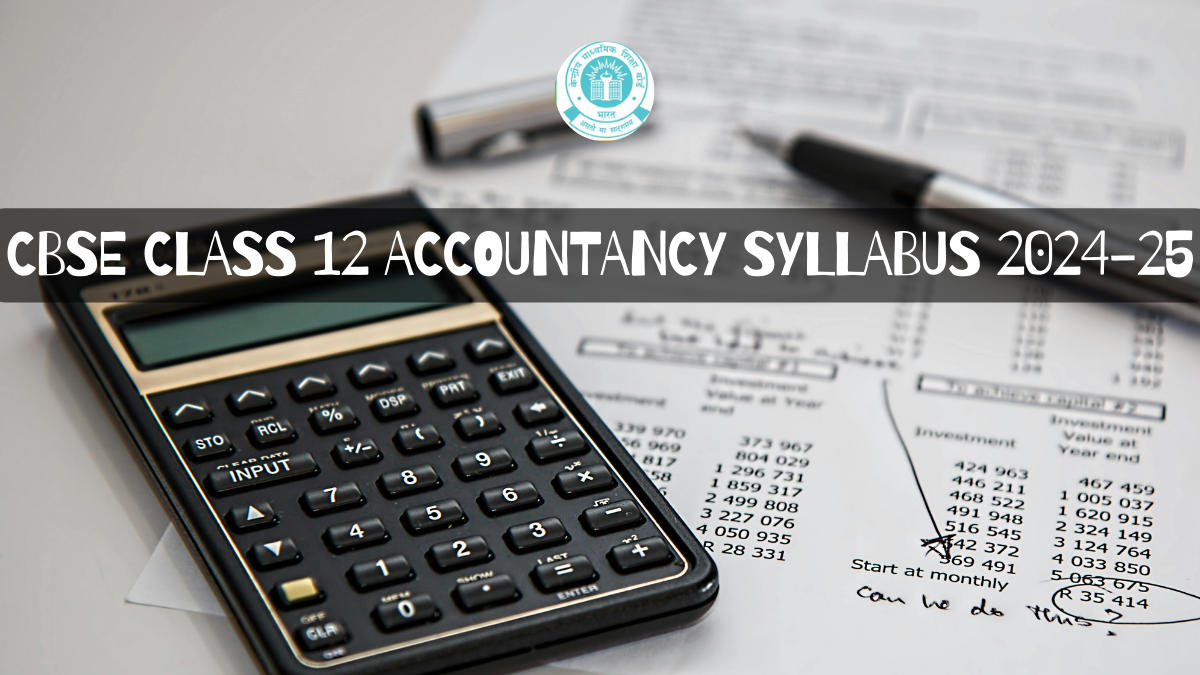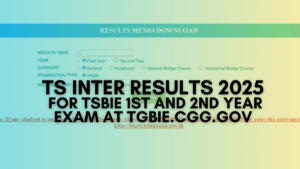Table of Contents
CBSE Class 12 Accountancy Syllabus 2024-25
CBSE Class 12 Accountancy Syllabus 2024-25 is a crucial subject for commerce students, and getting good marks in accounts. Accounting is taught in the two stages of schooling. In light of the rapidly evolving economic landscape, the accountancy subject has established itself as a reliable source of financial data at the senior secondary level.
The chapter and many other topics are covered in the Class 12 Accounts Syllabus 2025. These topics include accounting for partnership businesses, accounting for the company, cash flow statements, financial statement analysis, computerized accounting, and much more. Read the details about the exam pattern and syllabus below.
CBSE Class 12 Accountancy Syllabus 2024-25: Highlights
Students can better arrange their studies by covering all topics and comprehending the allocation of marks through the CBSE Class 12 Accountancy Syllabus 2024-25. Students who complete the course will have a solid foundation in fundamental accounting principles and techniques.
They will also gain knowledge of the changes that have occurred in the financial statements in compliance with the Companies Act of 2013 and applicable accounting standards. Additionally, the students are taught how to record company transactions using the Goods and Services Tax (GST) and its basic computations in class 12 syllabus.
Significance Class 12 Accounts Syllabus 2024-25
The Study of CBSE Class 12 Accounts helps students many way in their real life –
- The GST accounting treatment is limited to the class XI syllabus. It is impossible to overstate the growing importance of ICT in all spheres of society and how it is integrating into corporate operations.
- In classes XI and XII, accounting students are introduced to the computerized accounting system.
- In contrast, Company Accounts and Analysis of Financial Statements is an optional topic in Class XII. The purpose of this course is to teach students how to create need-based accounting databases for bookkeeping.
- The senior secondary accounting curriculum exposes students to the business world while putting a strong emphasis on the subject’s foundations.
CBSE Class 12 Accountancy Paper Pattern 2024-25
The Class 12 CBSE Accountancy theory paper of 80 Marks and the students will get 3 hrs to solve the paper. There will also be a project worth 20 Marks. Check out the detailed marks distribution in the syllabus and exam pattern in the two tables below.
| Unit Wise Syllabus & Marks Distribution | ||||
| Units | Periods | Marks | ||
| Part A | Accounting for Partnership Firms and Companies | |||
| Unit 1. Accounting for Partnership Firms | 105 | 36 | ||
| Unit 2. Accounting for Companies | 45 | 24 | ||
| 150 | 60 | |||
| Part B | Financial Statement Analysis | |||
| Unit 3. Analysis of Financial Statements | 30 | 12 | ||
| Unit 4. Cash Flow Statement | 20 | 8 | ||
| 50 | 20 | |||
| Part C | Project Work | 20 | 20 | |
| Project work will include: | ||||
| Project File | 12 Marks | |||
| Viva Voce | 8 Marks | |||
| Or | ||||
| Part B | Computerized Accounting | |||
| Unit 4. Computerized Accounting | 50 | 20 | ||
| Part C | Practical Work | 20 | 20 | |
| Practical work will include: | ||||
| Practical File 12 Marks | ||||
| Viva Voce 8 Marks | ||||
| Suggested Question Paper Design 2024-25 | |||
| Sl No. | Typology of Questions | Marks | Percentage |
| 1 | Remembering and Understanding: Exhibit memory of previously learned material by recalling facts, terms, basic concepts, and answers. Demonstrate understanding of facts and ideas by organizing, comparing, translating, interpreting, giving descriptions, and stating main ideas |
44 | 55% |
| 3 | Applying: Solve problems to new situations by applying acquired knowledge, facts, techniques and rules in a different way. | 19 | 23.75% |
| 4 | Analysing, Evaluating and Creating: Examine and break information into parts by identifying motives or causes. Make inferences and find evidence to support generalizations. Present and defend opinions by making judgments about information, validity of ideas, or quality of work based on a set of criteria. Compile information together in a different way by combining elements in a new pattern or proposing alternative solutions. |
17 | 21.25% |
| TOTAL | 80 | 100% | |
CBSE Class 12 Accountancy Syllabus 2025
Read the details about CBSE Class 12 Accountancy Syllabus 2025, projects, practicals below.
Part A: Accounting for Partnership Firms and Companies
Unit 1: Accounting for Partnership Firms
| Units/Topics |
Learning Outcomes
|
| · Partnership: features, Partnership Deed. · Provisions of the Indian Partnership Act 1932 in the absence of partnership deed. · Fixed v/s fluctuating capital accounts. Preparation of Profit and Loss Appropriation account- division of profit among partners, guarantee of profits. · Past adjustments (relating to interest on capital, interest on drawing, salary and profit sharing ratio). · Goodwill: meaning, nature, factors affecting and methods of valuation – average profit, super profit and capitalization.Note: Interest on partner’s loan is to be treated as a charge against profits. Goodwill: meaning, factors affecting, need for valuation, methods for calculation (average profits, super profits and capitalization), adjusted through partners capital/ current account.Accounting for Partnership firms – Reconstitution and Dissolution. · Change in the Profit Sharing Ratio among the existing partners – sacrificing ratio, gaining ratio, accounting for revaluation of assets and reassessment of liabilities and treatment of reserves, accumulated profits and losses. Preparation of revaluation account and balance sheet. · Admission of a partner – effect of admission of a partner on change in the profit sharing ratio, treatment of goodwill (as per AS 26), treatment for revaluation of assets and re- assessment of liabilities, treatment of reserves, accumulated profits and losses, |
After going through this Unit, the students will be able to:
· state the meaning of partnership, partnership firm and partnership deed. · describe the characteristic features of partnership and the contents of partnership deed. · discuss the significance of provision of Partnership Act in the absence of partnership deed. · differentiate between fixed and fluctuating capital, outline the process and develop the understanding and skill of preparation of Profit and Loss Appropriation Account. · develop the understanding and skill of preparation profit and loss appropriation account involving guarantee of profits. · develop the understanding and skill of making past adjustments. · state the meaning, nature and factors affecting goodwill · develop the understanding and skill of valuation of goodwill using different methods. · state the meaning of sacrificing ratio, gaining ratio and the change in profit sharing ratio among existing partners. · develop the understanding of accounting treatment of revaluation assets and reassessment of liabilities and treatment of reserves and accumulated profits by preparing revaluation account and balance sheet. · explain the effect of change in profit sharing ratio on admission of a new partner. · develop the understanding and skill of |
| adjustment of capital accounts and preparation of capital, current account and balance sheet. · Retirement and death of a partner: effect of retirement / death of a partner on change in profit sharing ratio, treatment of goodwill (as per AS 26), treatment for revaluation of assets and reassessment of liabilities, adjustment of accumulated profits, losses and reserves, adjustment of capital accounts and preparation of capital, current account and balance sheet. Preparation of loan account of the retiring partner. · Calculation of deceased partner’s share of profit till the date of death. Preparation of deceased partner’s capital account and his executor’s account. · Dissolution of a partnership firm: meaning of dissolution of partnership and partnership firm, types of dissolution of a firm. Settlement of accounts – preparation of realization account, and other related accounts: capital accounts of partners and cash/bank a/c (excluding piecemeal distribution, sale to a company and insolvency of partner(s)). Note: (i) If the realized value of tangible assets is not given it should be considered as realized at book value itself. (ii) If the realized value of intangible assets is not given it should be considered as nil (zero value). (ii) In case, the realization expenses are borne by a partner, clear indication should be given regarding the payment thereof. |
treatment of goodwill as per AS-26, treatment of revaluation of assets and re-assessment of liabilities, treatment of reserves and accumulated profits, adjustment of capital accounts and preparation of capital, current account and balance sheet of the new firm.
· explain the effect of retirement / death of a partner on change in profit sharing ratio. · develop the understanding of accounting treatment of goodwill, revaluation of assets and re-assessment of liabilities and adjustment of accumulated profits, losses and reserves on retirement / death of a partner and capital adjustment. · develop the skill of calculation of deceased partner’s share till the time of his death and prepare deceased partner’s and executor’s account. · discuss the preparation of the capital accounts of the remaining partners and the balance sheet of the firm after retirement / death of a partner. · understand the situations under which a partnership firm can be dissolved. · develop the understanding of preparation of realisation account and other related accounts. |
Unit-3 Accounting for Companies
| Units/Topics |
Learning Outcomes
|
| Accounting for Share Capital · Features and types of companies. · Share and share capital: nature and types. |
After going through this Unit, the students will be able to:
· state the meaning of share and share capital |
| · Accounting for share capital: issue and allotment of equity and preferences shares. Public subscription of shares – over subscription and under subscription of shares; issue at par and at premium, calls in advance and arrears (excluding interest), issue of shares for consideration other than cash. · Concept of Private Placement and Employee Stock Option Plan (ESOP), Sweat Equity. · Accounting treatment of forfeiture and re- issue of shares. · Disclosure of share capital in the Balance Sheet of a company.Accounting for Debentures · Debentures: Meaning, types, Issue of debentures at par, at a premium and at a discount. Issue of debentures for consideration other than cash; Issue of debentures with terms of redemption; debentures as collateral security-concept, interest on debentures (concept of TDS is excluded). Writing off discount / loss on issue of debentures. Note: Discount or loss on issue of debentures to be written off in the year debentures are allotted from Security Premium Reserve (if it exists) and then from Statement of Profit and Loss as Financial Cost (AS 16) |
and differentiate between equity shares and preference shares and different types of share capital.
· understand the meaning of private placement of shares and Employee Stock Option Plan. · explain the accounting treatment of share capital transactions regarding issue of shares. · develop the understanding of accounting treatment of forfeiture and re-issue of forfeited shares. · describe the presentation of share capital in the balance sheet of the company as per schedule III part I of the Companies Act 2013. · explain the accounting treatment of different categories of transactions related to issue of debentures. · develop the understanding and skill of writing of discount / loss on issue of debentures. · understand the concept of collateral security and its presentation in balance sheet. · develop the skill of calculating interest on debentures and its accounting treatment. · state the meaning of redemption of debentures. |
Part B: Financial Statement Analysis
Unit 4: Analysis of Financial Statements
| Units/Topics |
Learning Outcomes
|
| Financial statements of a Company: Meaning, Nature, Uses and importance of financial Statement. Statement of Profit and Loss and Balance Sheet in |
After going through this Unit, the students will be able to:
· develop the understanding of major headings and sub-headings (as per Schedule III to the |
| prescribed form with major headings and sub headings (as per Schedule III to the Companies Act, 2013)
Note: Exceptional items, extraordinary items and profit (loss) from discontinued operations are excluded. |
Companies Act, 2013) of balance sheet as per the prescribed norms / formats.
· state the meaning, objectives and limitations of financial statement analysis. · discuss the meaning of different tools of ‘financial statements analysis’. · develop the skill of preparation of preparation of comparative and common size statement, understand their uses and difference between the two. · state the meaning, objectives and significance of different types of ratios. · develop the understanding of computation of current ratio and quick ratio. · develop the skill of computation of debt equity ratio, total asset to debt ratio, proprietary ratio and interest coverage ratio. · develop the skill of computation of inventory turnover ratio, trade receivables and trade payables ratio and working capital turnover ratio and others. · develop the skill of computation of gross profit ratio, operating ratio, operating profit ratio, net profit ratio and return on investment. |
Unit 5: Cash Flow Statement
| Units/Topics |
Learning Outcomes
|
| · Meaning, objectives Benefits, Cash and Cash Equivalents, Classification of Activities and preparation (as per AS 3 (Revised) (Indirect Method only) |
After going through this Unit, the students will be able to:
· state the meaning and objectives of cash flow statement. |
| Note: (i) Adjustments relating to depreciation and amortization, profit or loss on sale of assets including investments, dividend (both final and interim) and tax. (ii) Bank overdraft and cash credit to be treated as short term borrowings. (iii) Current Investments to be taken as Marketable securities unless otherwise specified. |
· develop the understanding of preparation of Cash Flow Statement using indirect method as per AS 3 with given adjustments.
|
Project Work
One specific project based on financial statement analysis of a company covering any two aspects from the following:
1. Comparative and common size financial statements
2. Accounting Ratios
3. Segment Reports
4. Cash Flow Statements
OR
Part B: Computerised Accounting
Unit 4: Computerised Accounting
Overview of Computerised Accounting System
• Introduction: Application in Accounting.
• Features of Computerised Accounting System.
• Structure of CAS.
• Software Packages: Generic; Specific; Tailored.
Accounting Application of Electronic Spreadsheet.
• Concept of electronic spreadsheet.
• Features offered by electronic spreadsheet.
• Application in generating accounting information – bank reconciliation statement; asset accounting; loan repayment of loan schedule, ratio analysis
• Data representation- graphs, charts and diagrams.
Using Computerized Accounting System.
• Steps in installation of CAS, codification and Hierarchy of account heads, creation of accounts.
• Data: Entry, validation and verification.
• Adjusting entries, preparation of balance sheet, profit and loss account with closing entries and opening entries.
• Need and security features of the system.
Part C: Practical Work
These are the Prescribed Books for practical classes for class 12.
- Financial Accounting -I Class XI NCERT Publication
- Accountancy -II Class XI NCERT Publication
- Accountancy -I Class XII NCERT Publication
- Accountancy -II Class XII NCERT Publication Accountancy – Computerised
- Accounting System Class XII NCERT Publication
Class 12 Accountancy CBSE Syllabus 2024-25 PDF
Class 12 Accountancy CBSE Syllabus 2024-25 Syllabus PDF is given below in the box. This Class 12 Accounts syllabus is very important for them because if they study well in-depth it will help them in higher studies.
| Download PDF |




 West Bengal Madhyamik Result 2025 Date a...
West Bengal Madhyamik Result 2025 Date a...
 TS Inter Results 2025 at tgbie.cgg.gov.i...
TS Inter Results 2025 at tgbie.cgg.gov.i...
 MH CET Law Admit Card 2025 Out, Download...
MH CET Law Admit Card 2025 Out, Download...










